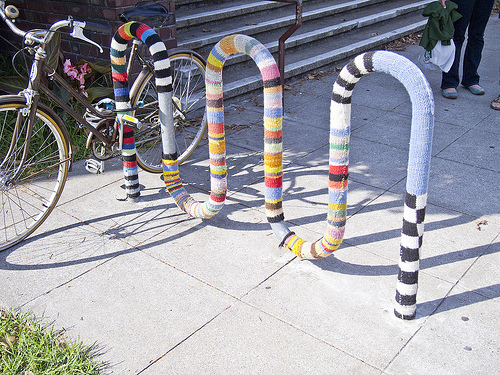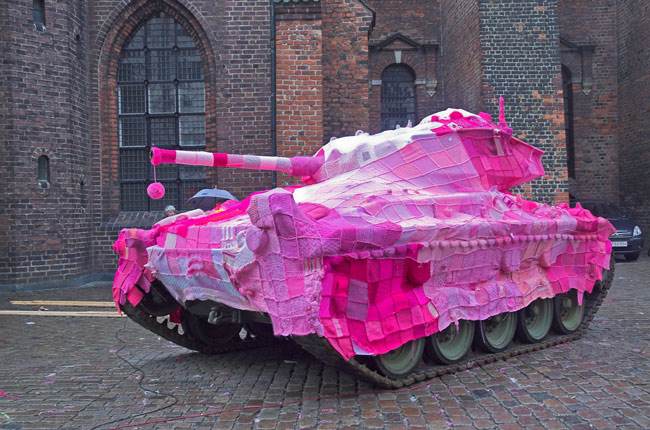
These days knitting, crocheting and sewing are popular hobbies. But it’s hard not to notice that these crafts are still largely dominated by women. So why do so few men do these kinds of crafts? When we’re in elementary school, boys and girls all make the same Christmas ornaments and woven potholders, but once we get a little bit older the girls are sewing in home economics and the boys are playing with power tools in woodshop.
Many men still wouldn’t be caught dead knitting or sewing a torn pair of pants. Women can do traditionally “manly” tasks like fixing things around the house or changing the oil in their car without it being a threat to their womanliness. But for most men, acting too “feminine” is still a big taboo. Women can wear men’s clothes without getting too many funny looks, but when was the last time you saw a man walking down the street wearing a skirt?
There also aren’t a lot of women who are carpenters or furniture makers, but there’s not such a stigma around women doing “manly” crafts. The stigma attached to men doing “women’s” crafts is part of the larger cultural phenomenon of devaluing women’s work and contributions. This contributes to the gender disparity in pay, to the gendering of careers (i.e. teachers, nurses, and housekeepers are mostly women; most IT and engineering jobs are filled by men), and people generally getting boxed into gender stereotypes. It’s part of a culture that denigrates boys for being too “girly” if they like theater or playing with dolls. Girls don’t get nearly as much hassle from their peers (or from adults for that matter) for acting like a tomboy, and the same paradigm holds true once we’re grownups.
There are definitely men crafting though, and maybe as more men take up traditionally female crafts, this stigma will break down. Websites like menwhoknit.com and the existence of Men’s Knitting Retreats are signs that there are men who enjoy knitting and aren’t afraid to show it. The UK site Stitch Craft Create compiled a list of British men who love crafting so much they do it for a living. It includes bloggers like the super-crocheter One Man Crochet (who also has the coolest avatar ever) and cross-stitcher Mr. X Stitch. Apparently even Ryan Gosling loves knitting!
![]()
However, the fact that men’s knitting groups exist shows that they feel they need their own space where they don’t have to worry about feeling out of place. One male knitter has observed that most knitting books and magazines predominantly feature images of women and very few patterns for men’s clothing. When all you see are women knitting, it reinforces the stereotype of knitting as a women’s hobby and makes men even more reluctant to take it up.

Having more men involved in needlework and other crafts might help chip away at restrictive expectations of what men are supposed to like or do. It may also help elevate the status of those crafts, although I hate the idea that something would be valued more just because men participate in it. In any case, it will take both bold men and open-minded women to create a craft world where those of all genders feel welcome and where their work is valued.




